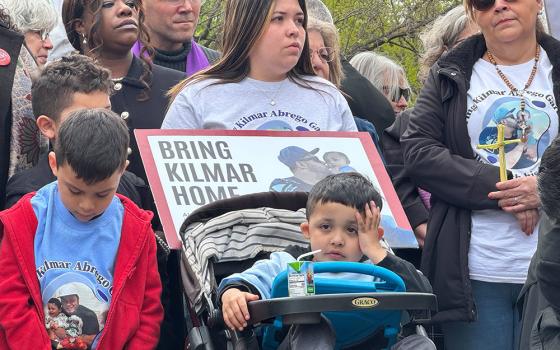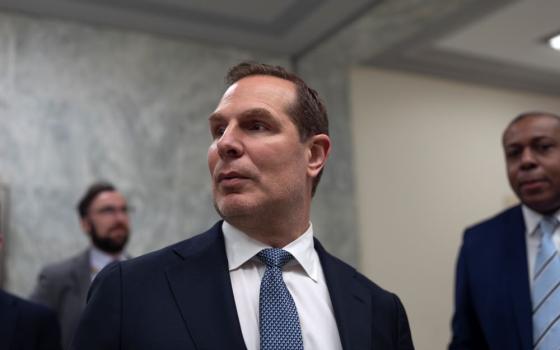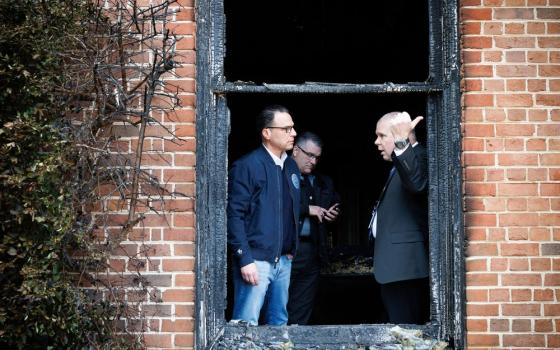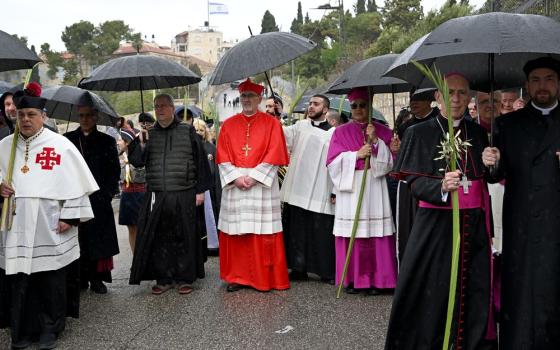
Fifty years ago today, Jan. 25, 1959, Pope John XXIII surprised the world by calling for an Ecumenical Council. Vatican II would convene in 1962.
Ninety-three years passed between Vatican I (1869 -1870) and Vatican II (1962 -1965). Many believed the church had been doing quite well as it was, and should resist any enterprise that would disturb its temporal order.
But not Pope John XXIII.
So he convened a council, and it was a fresh and far reaching initiative for the church, although there were many people who believed that the church was doing very well as it was, and had no need for change.
To the contrary, these conservatives believed the church should resist any efforts that would disturb its good order of practice and doctrine—as governed by the Roman Curia. Their attitude was “not in my china shop!”
----------------------------------------------------------------------------------------------------------
Read Fr. Richard McBrien's Essay: John XXIII calls the council
---------------------------------------------------------------------------------------------------------------
In the meantime, others went to work on the efforts of renewal and reform. And we witnessed much involvement, generosity, kindness, and courage on a grand scale. It was, as some said, a worldwide Catholic Camelot. When you wanted to try new things, and were asked “Why?” You quipped, “Why not?” Naiveté? A bit of arrogance? Probably. But it felt good to be moving forward, at long last, in a church that had been so mired for hundreds of years in post-reformation and post-modern defensiveness.
Today, for many liberal Catholics, the successes of the Council remain too little, too late. Crafty, sometimes vengeful conservative prelates have been rolling back reform. They are demolishing Camelot, stone by stone.
What to do now? How do we finally break out of decades of post-Vatican II infighting between those calling for more reform and those resisting it in all shades?
Forgiveness, it seems, is the first step to renewing the stored up hopes of Vatican II. We must forgive our popes - Paul VI, John Paul II, Benedict XVI – as well as well as the rest of the church hierarchy, and others responsible for resisting and not carrying out the will of the council, for putting us in our present predicament. And, galling though it may be, we must ask the conservatives and reactionaries to forgive us for what we, too, have done—or not done—to bring us to this sorry state.
Looking back to yesteryear, we remember that with each session of the council, more enthusiasm was building among liberals and many moderates who favored reform, even if they wanted to proceed slowly. Also building was more intransigence among conservatives and reactionaries.
There was a suggestion of changes to come when the assembled hierarchy voted to reject the agenda proposed by conservatives in the Roman curia. Instead, the bishops decided that the first major topic should be liturgy and worship, the heart of the church.
During all the deliberations over four years, the catch phrase was ecclesia semper reformanda — the church always reforming itself.
Slowly the tide shifted and a huge wave of optimism, energy and enthusiasm emerged as the assembled hierarchy proceeded through the final two sessions of the council. When the council ended, the wave crested with an outpouring of pent-up hope and excitement.
Millions and millions of Catholics along with many more millions of believers from other faith traditions rolled up their collective shirtsleeves and began to put into practice the reforms wrought by the council.
For the most part, bishops, clergy, religious and a fired-up laity worked together. Maybe it was goodwill run amuck. (Was that so bad?) Maybe, as many proclaimed, it was the Holy Spirit at work, silencing or at least muting those naysayers whom Pope John XXIII called “prophets of gloom and doom.”
Looking back at the immediate post-Vatican II church, we can say that this parade of joyous engagement was like Palm Sunday: a prelude to the agony and crucifixion to come.
The prevailing hope was that so many priorities and practices within the church could be different, radically different, as we returned to the roots of our faith — to the early centuries, not just to the add-ons during the last 300 years or so.
In the early Vatican II era, the operative word was “change.” But trivial changes, like dropping the maniple from the arm of a priest’s vestments, did not answer the longings of many people, especially among priests and religious. Tens of thousands of them left their birettas and veils on the doorstep. And very often, the doors of churches and convents were slammed shut behind them. Good riddance? Or celebrating life and love, and no longer willing to put up with issues that often were patently ridiculous?
| A short audio and photographic profile of "Good Pope John." |
Today we are at another point in time. The effects of reform remain alive in many of our parishes, but those who seemingly never favored far reaching renewal have the upper hand and are attempting to take us back in time.
So where do we go from here? It is easy to blame John Paul II and the thousands of faint-hearted bishops he named to replace those prelates who really captured — or were captured by — the Spirit unleashed at Vatican II. It is easy because John Paul II and those bishops deserve the blame.
We can wallow in brokenhearted melancholy, weeping for what might have been. We can grit our teeth because the enormous goodwill of millions of people has been squandered. We can rend our garments because millions of Catholics are now Protestants (or Buddhists or Hindus) and more and more Catholics, especially women, join the exodus every year.
Were the pope and bishops afraid and contemptuous of the faithful and of the many ways outside the Catholic mainstream that these people, especially women, strive for holiness?
Is it surprising if the faithful feel so frustrated or apathetic or contemptuous of the hierarchy and clerics? Is it surprising that so many Catholics, now that Vatican II is a receding memory, are voting with their feet and walking out the door?
Weary and even heart-broken, let us consider forgiveness. Our ultimate model of forgiveness is Jesus Christ, and for a concrete, recent Christian example we have the Amish of Nickel Mines, Pa. In the fall of 2006, Charles Carl Roberts IV, a truck driver, entered the Amish community’s one-room schoolhouse and held 10 girls hostage for several hours. He then shot and killed five of the girls and seriously wounded the other five.
How the Amish community responded with forgiveness in so many ways is told in the book Amish Grace, How Forgiveness Transcended Tragedy, by Donald B. Kraybill, Steven M. Nolt and David L. Weaver-Zercher (Jossey-Bass). “Amish people are likely to say that they are simply trying to be obedient to Jesus Christ who commanded his followers to do many peculiar things, such as love, bless and forgive their enemies,” they write. These Amish people’s ongoing forgiveness, pardon and reconciliation are a model for us as we try to liberate the Catholic church from its current predicament.
Forgiveness is the way to make us whole again. It is the medium through which we tap into the transcendent power of the Holy Spirit. Forgiveness is the balm to ease our pain and restore our optimism. Forgiveness helps us avoid sinking into the ugly cancer of contempt. It frees us from the temptation to get even, to one-up or put down our adversaries. Forgiveness enables us to purify our intentions so that every step of our ecclesial crusade is marked with magnanimity.
Forgiveness matters because internal church reform is important. Because the church — the entire people of God, including the hierarchy — is important to the world and to each of us individually. A disfigured body of Christ, a distorted proclaiming of the good news, destroys the church’s credibility, which weakens and diminishes the power of that proclamation, much as Kryptonite saps the power of Superman.
Child sexual abuse by the clergy and its scandalous cover-up is one major piece of Catholic Kryptonite. Another is the hierarchy’s maneuvering for power and control of the life of the church, which is like clipping the wings of the Holy Spirit. But the hierarchy is not alone in glorying in their intransigence, as illustrated by the joke: “What’s the difference between a terrorist and a liturgist? Answer: You can negotiate with a terrorist.”
There was a lot of negotiation in the early church — between Paul and Peter and other disciples. But the apostles and disciples worked hard to keep union between Jewish and gentile Christians. They made decisions on particular issues in particular places and then got together to reconcile differences. They trusted that the Holy Spirit would speak to them and that they would understand what the Spirit was telling them. There was unity but not uniformity.
Perhaps we are moving in that direction. More people are fed up with the injustices in the church and one-size-fits-all governance. More people are not willing to be pushed out of the church. “It’s my church, too,” they say. There will be more and more ordinations of women. There will be more married priests active in ministries. There will be more alternative small communities, many on the order of the early Christians’ “house churches.”
There will be less asking permission to try one thing and another (“When you can’t take no for an answer, don’t ask”). More and more people are comfortable to “just do it.” That’s why there won’t be a breakaway liberal church. That’s why, when bishops shut down parishes, there may be alternative groups that move in and open them up.
What there might be, or perhaps should be, is an experimental rite, one for each country that finds it useful to help preserve the union of the church.
Because the faithful have no say about choosing their bishop, alternative groups or experimental-rite Catholics will try to have relationships with the local bishop. Pastoral bishops who regard the pope as a brother, not a watchdog, will find the experience productive and maybe even enjoyable.
And in that day, fear will not be a factor among church leaders. The faithful, in that day, will continue to be faithful to God, to each other and to the well-being of their house churches, their experimental rite and what’s left of their parish churches. They will say to each other, in the manner of St. Paul, “Stay the course.”
In a time of turmoil, they will not care where they are told to put the sign of peace in the order of Mass. They will not care about saying, “and also with you.” They will laugh if they are told to welcome the eucharistic Lord “under my roof.” And they will forget about it.
In that day, they will be known for their compassion, generosity, courage and wisdom. And of them it will be said, as it was of the first followers of Jesus, “See how these Christians love one another.”
[Jason Petosa, a former NCR publisher, is the owner of Steadfast Publishing located in Kansas City, Mo.]



